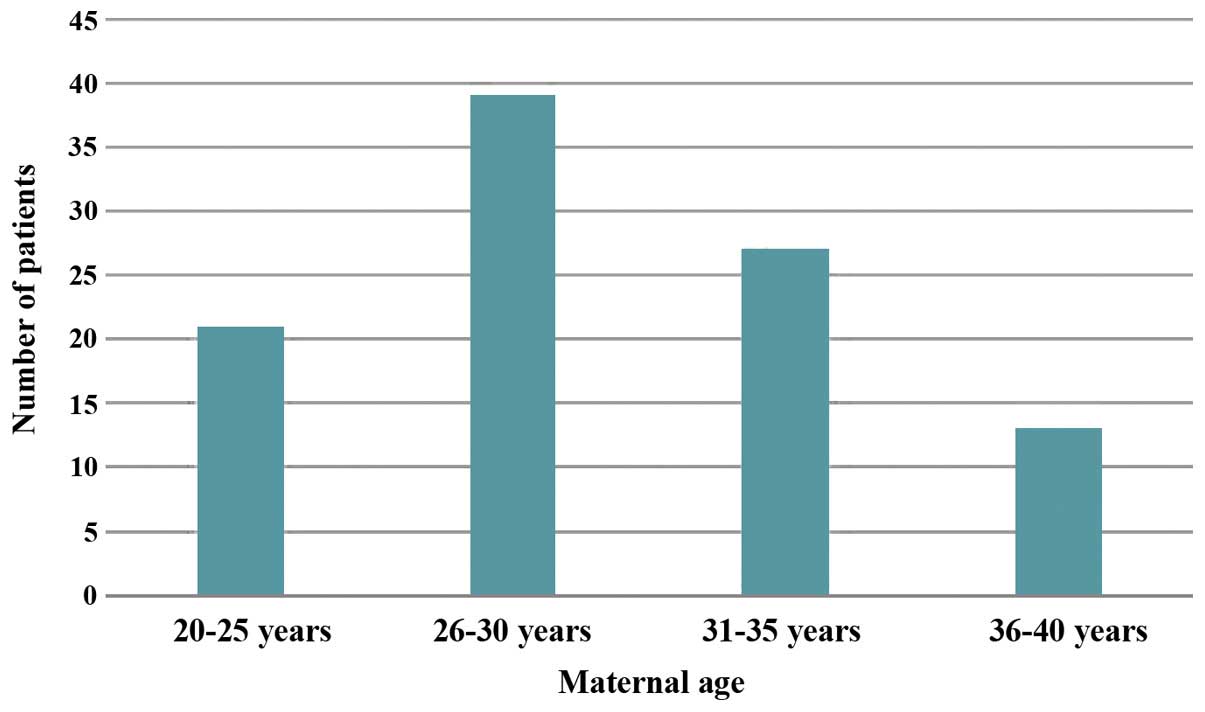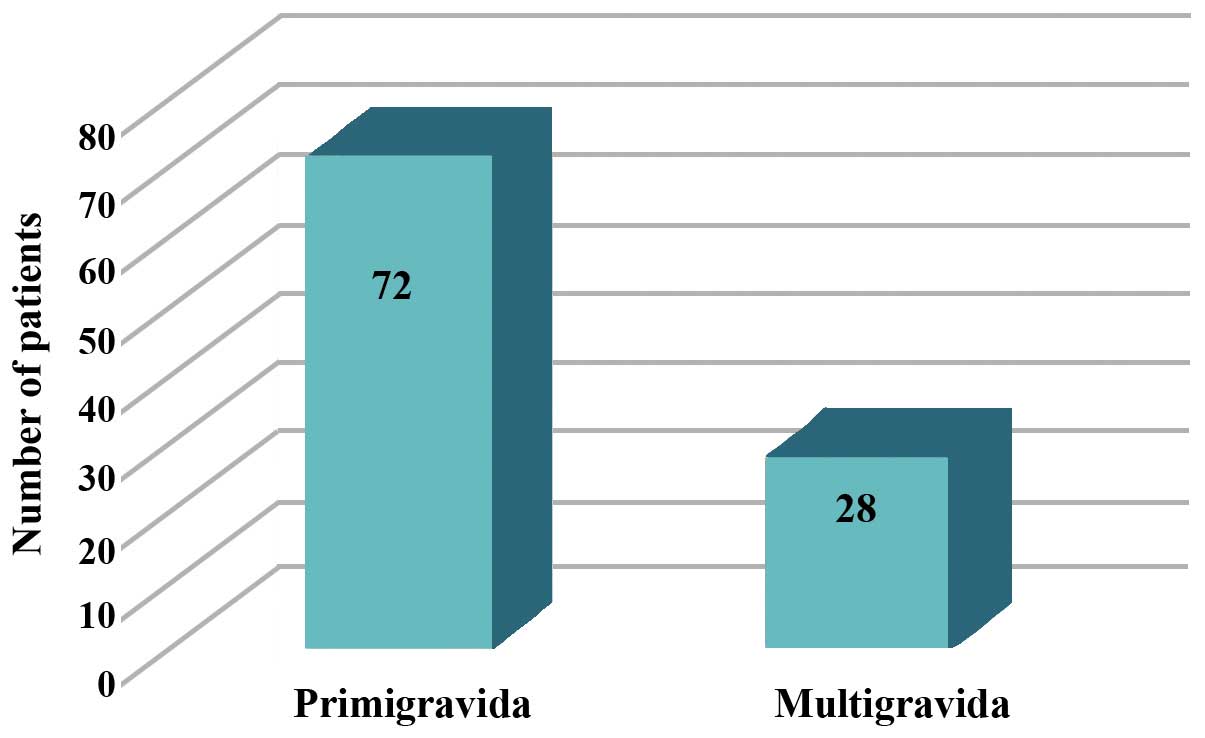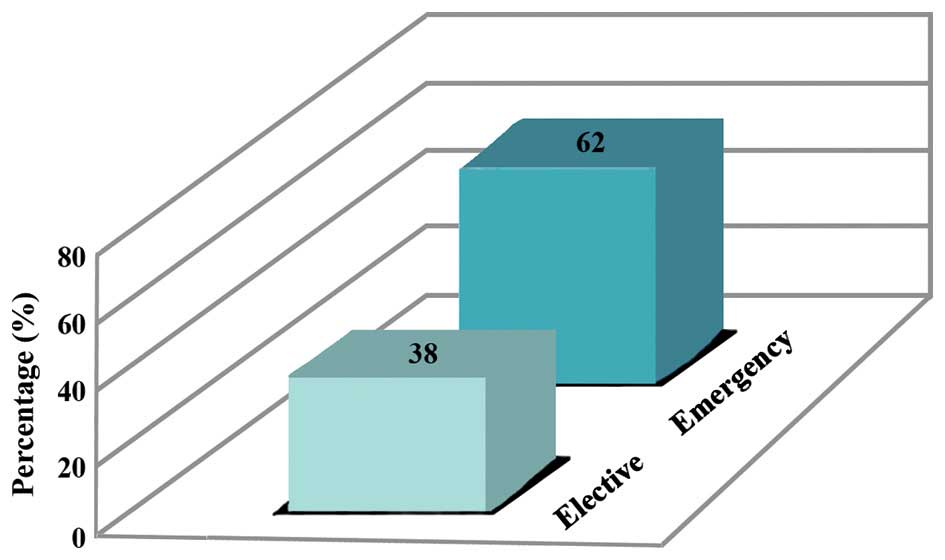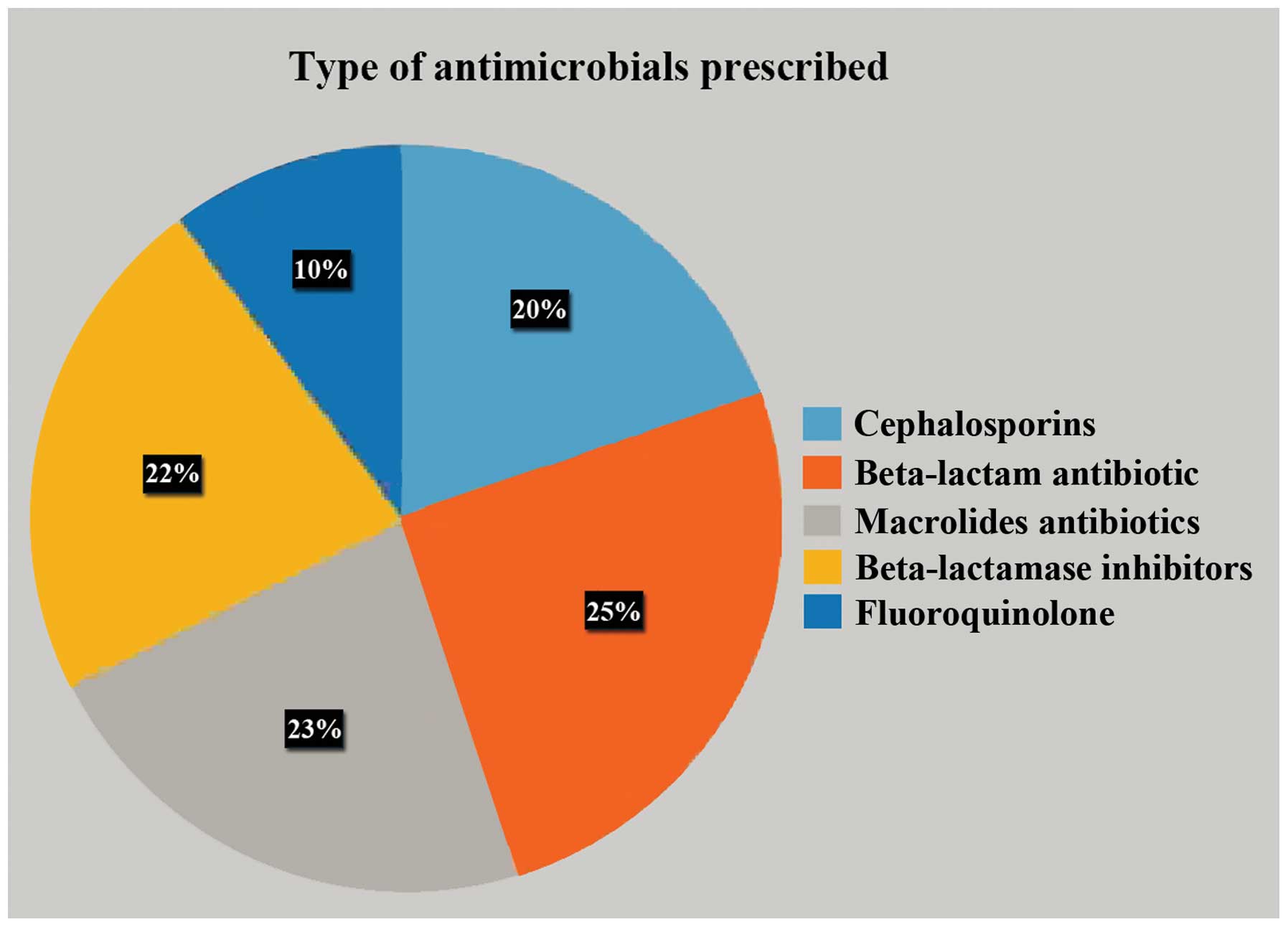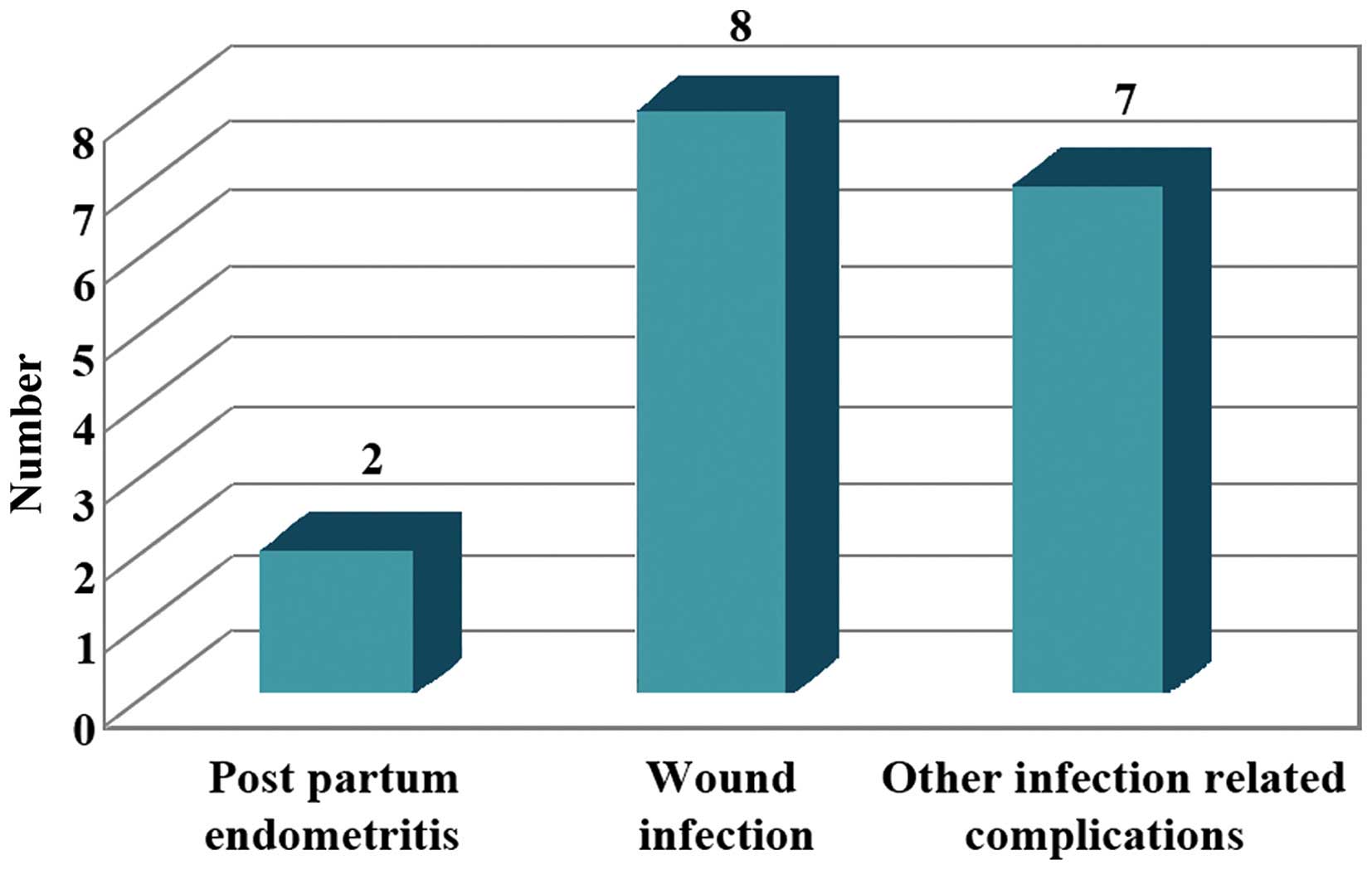|
1
|
Warnecke HH, Graeff H, Selbmann HK,
Preac-Mursic V, Adam D, Gloning KP, Jänicke F and Zander J:
Perioperative short-term prophylaxis with antibiotics in caesarean
section. Geburtshilfe Frauenheilkd. 42:654–661. 1982.(In German).
View Article : Google Scholar : PubMed/NCBI
|
|
2
|
Smaill FM and Grivell RM: Antibiotic
prophylaxis versus no prophylaxis for preventing infection after
cesarean section. Cochrane Database Syst Rev.
10:CD0074822014.PubMed/NCBI
|
|
3
|
de Jonge L, Bos HJ, van Langen IM, de
Jong-van den Berg LT and Bakker MK: Antibiotics prescribed before,
during and after pregnancy in the Netherlands: a drug utilization
study. Pharmacoepidemiol Drug Saf. 23:60–68. 2014. View Article : Google Scholar : PubMed/NCBI
|
|
4
|
Lee F, Wong P, Hill F, Burgner D and
Taylor R: Evidence behind the WHO guidelines: hospital care for
children: what is the role of prophylactic antibiotics in the
management of burns? J Trop Pediatr. 55:73–77. 2009. View Article : Google Scholar : PubMed/NCBI
|
|
5
|
Clifford V and Daley A: Antibiotic
prophylaxis in obstetric and gynaecological procedures: a review.
Aust N Z J Obstet Gynaecol. 52:412–419. 2012. View Article : Google Scholar : PubMed/NCBI
|
|
6
|
van Schalkwyk J, Van Eyk N, Yudin MH,
Boucher M, Cormier B, Gruslin A, Money DM, Ogilvie G, Castillo E,
Paquet C, et al: Society of Obstetricians and Gynaecologists of
Canada Infectious Diseases Committee: Antibiotic prophylaxis in
obstetric procedures. J Obstet Gynaecol Can. 32:878–892. 2010.
View Article : Google Scholar : PubMed/NCBI
|
|
7
|
Janisch H, Philipp K and Riss P: The
effect of antibiotic prophylaxis in vaginal obstetric procedures
(author's transl). Wien Klin Wochenschr. 91:227–230. 1979.(In
German). PubMed/NCBI
|
|
8
|
Tita AT, Rouse DJ, Blackwell S, Saade GR,
Spong CY and Andrews WW: Emerging concepts in antibiotic
prophylaxis for cesarean delivery: a systematic review. Obstet
Gynecol. 113:675–682. 2009. View Article : Google Scholar : PubMed/NCBI
|
|
9
|
Watts DH, Krohn MA, Hillier SL and
Eschenbach DA: Bacterial vaginosis as a risk factor for
post-cesarean endometritis. Obstet Gynecol. 75:52–58.
1990.PubMed/NCBI
|
|
10
|
Mara JE and Baker JL: Hypertension and
haematomas: prophylaxis with apresoline. Br J Plast Surg.
30:169–170. 1977. View Article : Google Scholar : PubMed/NCBI
|
|
11
|
Lamont RF, Sobel JD, Kusanovic JP,
Vaisbuch E, Mazaki-Tovi S, Kim SK, Uldbjerg N and Romero R: Current
debate on the use of antibiotic prophylaxis for caesarean section.
BJOG. 118:193–201. 2011. View Article : Google Scholar : PubMed/NCBI
|
|
12
|
Dlamini LD, Sekikubo M, Tumukunde J, Kojjo
C, Ocen D, Wabule A and Kwizera A: Antibiotic prophylaxis for
caesarean section at a Ugandan hospital: a randomised clinical
trial evaluating the effect of administration time on the incidence
of postoperative infections. BMC Pregnancy Childbirth. 15:912015.
View Article : Google Scholar : PubMed/NCBI
|
|
13
|
Liabsuetrakul T, Lumbiganon P and
Chongsuvivatwong V: Prophylactic antibiotic prescription for
cesarean section. Int J Qual Health Care. 14:503–508. 2002.
View Article : Google Scholar : PubMed/NCBI
|
|
14
|
Newton ER and Wallace PA: Effects of
prophylactic antibiotics on endometrial flora in women with
postcesarean endometritis. Obstet Gynecol. 92:262–268. 1998.
View Article : Google Scholar : PubMed/NCBI
|
|
15
|
Sherman D, Lurie S, Betzer M, Pinhasi Y,
Arieli S and Boldur I: Uterine flora at cesarean and its
relationship to postpartum endometritis. Obstet Gynecol.
94:787–791. 1999. View Article : Google Scholar : PubMed/NCBI
|
|
16
|
Watts DH, Eschenbach DA and Kenny GE:
Early postpartum endometritis: the role of bacteria, genital
mycoplasmas, and Chlamydia trachomatis. Obstet Gynecol. 73:52–60.
1989.PubMed/NCBI
|
|
17
|
Emmons SL, Krohn M, Jackson M and
Eschenbach DA: Development of wound infections among women
undergoing cesarean section. Obstet Gynecol. 72:559–564.
1988.PubMed/NCBI
|
|
18
|
Roberts S, Maccato M, Faro S and Pinell P:
The microbiology of post-cesarean wound morbidity. Obstet Gynecol.
81:383–386. 1993.PubMed/NCBI
|
|
19
|
Andrews WW, Shah SR, Goldenberg RL, Cliver
SP, Hauth JC and Cassell GH: Association of post-cesarean delivery
endometritis with colonization of the chorioamnion by Ureaplasma
urealyticum. Obstet Gynecol. 85:509–514. 1995. View Article : Google Scholar : PubMed/NCBI
|
|
20
|
Keski-Nisula L, Kirkinen P, Katila ML,
Ollikainen M, Suonio S and Saarikoski S: Amniotic fluid U.
urealyticum colonization: significance for maternal peripartal
infections at term. Am J Perinatol. 14:151–156. 1997. View Article : Google Scholar : PubMed/NCBI
|
|
21
|
Yoon BH, Romero R, Park JS, Chang JW, Kim
YA, Kim JC and Kim KS: Microbial invasion of the amniotic cavity
with Ureaplasma urealyticum is associated with a robust host
response in fetal, amniotic, and maternal compartments. Am J Obstet
Gynecol. 179:1254–1260. 1998. View Article : Google Scholar : PubMed/NCBI
|
|
22
|
Gordon HR, Phelps D and Blanchard K:
Prophylactic cesarean section antibiotics: maternal and neonatal
morbidity before or after cord clamping. Obstet Gynecol.
53:151–156. 1979.PubMed/NCBI
|
|
23
|
Itskovitz J, Paldi E and Katz M: The
effect of prophylactic antibiotics on febrile morbidity following
cesarean section. Obstet Gynecol. 53:162–165. 1979.PubMed/NCBI
|
|
24
|
Ledger WJ: Prophylactic antibiotics in
cesarean section. Am J Obstet Gynecol. 194:15002006. View Article : Google Scholar : PubMed/NCBI
|



